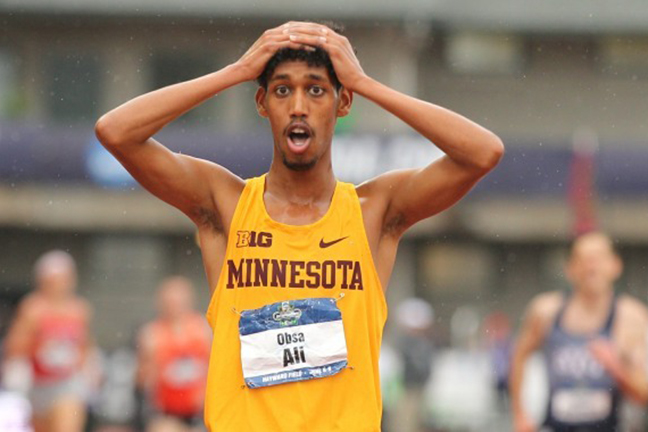Per Minneapolis Tribune
This past Sunday, CBS’ “60 Minutes” aired a story about the impact of COVID-related financial crises on college athletics. It featured circumstances at the University of Minnesota and its decision to cut three men’s athletic programs — gymnastics, tennis and indoor track and field.
Athletic director Mark Coyle declined to sit for an interview in which he might have explained his leadership choices. Instead, he issued another written statement. As a U graduate and former athlete and coach, I view this choice as additional evidence of Coyle’s inadequate leadership.
Coyle has consistently hidden behind misleading arguments about the constraints on his options. He argues that the postponement of Big Ten Conference athletic competition due to the pandemic resulted in an anticipated multimillion-dollar budget shortfall, leaving him no choice but to cut the teams. Coyle blamed the cuts on the legal requirements stipulated under Title IX of the Education Amendments of 1972, a federal civil rights policy that requires sex equity in American education.
My scholarly analysis of Title IX and the previous decade of equity practices at the U was recently published by the Humphrey School of Public Affairs Gender Policy Report. My findings raise serious concerns about the transparency of Coyle’s argument.
Coyle’s choice to pit men’s teams against women’s teams obscures longstanding inequities that favor men, both in athletic opportunities and financial support. It suggests a less than full commitment to comprehensive gender equity in Gopher athletics.
Although Title IX does not specifically prohibit unequal spending, leadership has allowed investment in men’s football to go unchecked over the past decade. For more than 10 years it has reported spending more money on the football team alone than all women’s sports combined.
While many critics will point to the unique position of some sports in generating revenue, Title IX’s protections against sex discrimination do not require athletes to “produce revenue” in order to be treated as full citizens. As a public institution that benefits from significant taxpayer funding, the U should be closely scrutinized whenever leaders make decisions which value or promote profit-seeking over nondiscrimination policy.
Coyle bypassed another opportunity to positively impact the long-term health and well-being of athletes’ civil rights, even in the face of financial strife. The way these decisions are publicly discussed by athletic leadership matters. My research indicates that athletes in the Big Ten are aware of and concerned about inequitable practices within their athletic departments. Statements by leadership can either bolster accurate understanding about public policy and departmental priorities or undermine it.
When Coyle refuses to engage the media, Minnesotans may believe the myth that there was no alternative solution.
However, rather than pitting men’s teams against women’s, the department could alter the roster size of its largest sport: men’s football. Although roughly 115 men comprise the roster, only a portion of them see playing time throughout the season. In the National Football League, rosters include only 53 players.
Spending-per-athlete is much higher in football than in any other men’s sport except basketball. (The long-term physical costs of the sport on player’s brains and bodies are also extraordinary.)
Cutting roster spots for football instead of entire low-cost men’s teams could allow for a less excruciating outcome. As it stands, the department seems poised to consider cutting additional teams rather than decrease football spending should the financial crisis worsen.
Minnesotans should remember that athletes who compete at the U are policy beneficiaries, protected by civil rights law against discrimination. The incomplete picture Gopher Athletics paints of its commitment to Title IX glosses over inequitable practices, ignores alternative solutions which could better address the financial strain and fundamentally undermines the pursuit of gender equity more broadly.
Coyle’s unwillingness to even provide an interview explaining his reasoning is an abdication of his responsibility as a public employee. He is not charged with running a private business. He is employed to steward the Athletic Department of a taxpayer-funded public university. He is responsible for choices that determine compliance with federal civil rights law and the economic and educational livelihoods of the nearly 700 athletes and roughly 300 staff members he oversees.
Gopher Athletics owes better to the stakeholders it serves.
Elizabeth Sharrow is associate professor of public policy and history at the
University of Massachusetts Amherst. She is a graduate of the University of
Minnesota and a former rowing team captain and coach.

